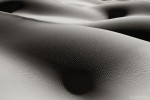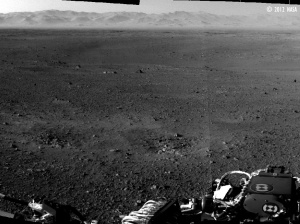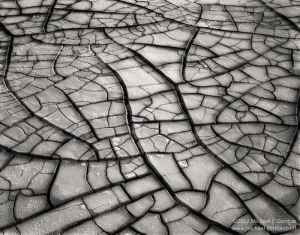
Mojave Trails National Monument – under “Review”
This is a very long post of vital national interest so I hope that you’ll bear with me…
America, your National Monuments are under attack even though the 45th Administration mildly terms it “review”. From the New York Times, April 26, 2017:
President Trump on Wednesday ordered the Interior Department to review the size and scope of national monuments larger than 100,000 acres created since 1996. He wants recommendations on whether any of those large tracts should be scaled back by presidential authority or by Congress.
Mr. Trump, signing the order at the Interior Department, described the designations as a “massive federal land grab” and ordered the agency to review and reverse some of them.
“It’s time to end these abuses and return control to the people, the people of Utah, the people of all of the states, the people of the United States,” the president said.
Yesterday’s egregious Executive Order (“Review of Designations Under the Antiquities Act“) hits too close to home for me and impacts every American. This is not an issue of politics; it is an issue of national heritage and American pride. Far too many Americans are incognizant of what is at stake with this Order. Recognize that people from around the world visit America to experience and enjoy what is absent from much of the world: our incredible National Parks, National Monuments, and wide-open protected spaces of the American west (sorry, Eastern U.S.). This cannot be taken for granted as you are now bearing witness to the potential vulnerability of these designations under tyrannical rule. Numerous polls have demonstrated that voters agree on public lands: we want our lands protected, we desire access for recreation, and we oppose increased fossil fuel development. If you agree, now is your time to be a patriot and act for America.
Nine National Monuments in California will see “review” under this Order. I have been personally involved with the designation of four (San Gabriel Mtns NM; Sand to Snow NM; Mojave Trails NM; Castle Mountains NM) through my photography, letter writing, attendance at public meetings, and speaking at public meetings.
My first involvement was with the San Gabriel Mountains NM. The movement towards it’s formation began in 2003. I photographed the region under contract beginning in 2010 (my photography was used to aid in the passage of designation). Passage of the Monument did not occur until late 2014, and only after much public meeting, discourse, and compromise.
Patently false statements are made when the President calls our National Monuments “massive federal land grab[s]” and the Interior Secretary says that he’ll “give that power back to the states and to the people where it belongs.” We, the American people, own this land (not the “feds”); you already have the power (it’s your land); and much public process was part of their ultimate designation. This Administration continues to lie to Americans on behalf of the harmful extractive industries it is beholden to (what’s that about “draining the swamp”, you say?)
A particular segment of the Executive Order is of great concern; I am emboldening the parts one should take careful note of:
“Monument designations that result from a lack of public outreach and proper coordination with State, tribal, and local officials and other relevant stakeholders may also create barriers to achieving energy independence, restrict public access to and use of Federal lands, burden State, tribal, and local governments, and otherwise curtail economic growth.”
In reading this statement, let us not forget that we now have a Con Man real estate and golf course developer as President and an oil man as Secretary of State. The phrases “energy independence” and “economic growth” are ideas incompatible with land protection. If this Administration successfully achieves its goals of reducing the size or revoking the status of any National Monument, the door opens wide to yet more oil production and/or cattle grazing on America’s most beautiful and treasured lands. Will you allow this?
“[L]ack of public outreach and proper coordination…” can be summarily dismissed as a false statement (please see earlier links). Bears Ears NM in Utah is high on this Administration’s hit list (OIL!); note many public meetings with stakeholders took place prior to its designation as well.
“[R]estrict public access to and use of Federal lands…” is another summarily false statement: NO citizen is denied access to any part of any National Monument at any time. You may not be able to ride your four-wheeler to your destination any longer, but complaining about a loss of such former use as off-roading demonstrates a misunderstanding of the reason for and need to protect public lands. If you’d like to see what is permitted versus prohibited at any particular National Monument: https://headwaterseconomics.org/wp-content/uploads/NatlMon_Permitted_Uses.pdf
The terms “Federal lands” and “public lands” are often used interchangeably. Federal lands are lands in the United States for which ownership is claimed by the U.S. federal government, pursuant to Article Four, section 3, clause 2 of the United States Constitution. Ownership of these lands is claimed by the U.S. on behalf of national and public interest (managing and distributing 327 million property deeds would prove very difficult). These are public lands to which all Americans (but not just Americans!) have 24/7/365 access. The exception to this rule are lands claimed by the Department of Defense for their training exercises (nearly 2 million acres here in California).
LINK: https://fas.org/sgp/crs/misc/R42346.pdf
Attempts to block National Monument designation and supporters of the 45th Administration’s Review of Designations Under the Antiquities Act incorrectly cite loss of “traditional” use under new National Monument designations as their source of opposition: Off-roading; hunting; grazing; loss of valid existing rights, etc. Blanket statements regarding blanket prohibitions cannot be made; some Monuments allow hunting, some allow grazing, some allow off-roading. Complaints about loss of mining activities demonstrates a misunderstanding of the reason for and need to protect public lands. Please see: https://headwaterseconomics.org/wp-content/uploads/NatlMon_Permitted_Uses.pdf
These are the basic and most important facts regarding this Order; links to additional articles and details can be found at the end of this article.
Now, will you PLEASE do this for America?
1. Please share, reshare, overshare this post or any other like it regarding this Review of Designations Under the Antiquities Act. Here is where sharing is truly caring.
2. Call Interior Secretary Ryan Zinke at 202-601-3839 and tell him that any attempts to revoke or shrink our national monuments is an assault on our historical, cultural, and natural heritage. You can also send him an easy form-fill email:
https://secure.npca.org/…/Advocacy;jsessionid=00000000.app3…
3. Contact your Congressperson and tell him/her that any attempts to revoke or shrink our national monuments is an assault on our historical, cultural, and natural heritage. His/her job depends upon their fight for your public lands; fire them (with your next vote) if they fail to act. http://www.house.gov/representatives/find/
4. If you operate a business or reside in San Bernardino County, California (home to Sand to Snow NM; Mojave Trails NM; Castle Mountains NM), please contact Representative Paul Cook at (760) 247-1815 and tell him that any attempts to revoke or shrink our National Monuments is an assault on our historical, cultural, and natural heritage. You can also email him: http://cookforms.house.gov/contact/
Specifically request that Rep. Cook send a written letter to the Department of Interior defending the designations and existing size of Sand to Snow NM, Mojave Trails NM, and Castle Mountains NM (all are in his District). His job depends upon his ability to fight for your public lands; fire him (with your next vote) if he fails to act. NOTE: office staff may seem uninterested in your call and may dispense false information by stating that Representative Cook cannot do anything. You may be told to call the President with your concerns. Persist, RESIST.
THANK YOU for what you do for America!
You are visiting the blog of fine art landscape photographer Michael E. Gordon. For additional photos and information, please visit his official website. You can also find Michael











